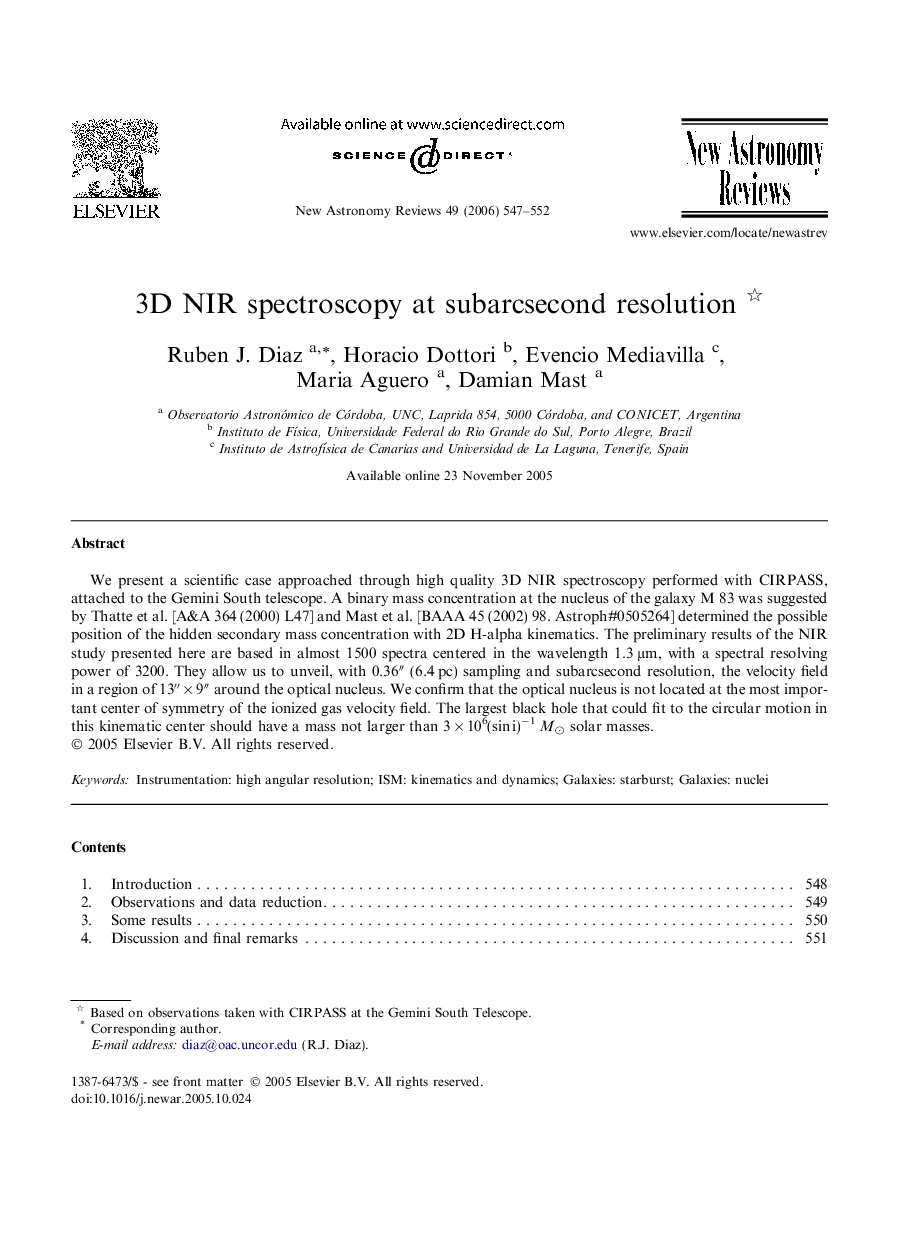| Article ID | Journal | Published Year | Pages | File Type |
|---|---|---|---|---|
| 1780523 | New Astronomy Reviews | 2006 | 6 Pages |
Abstract
We present a scientific case approached through high quality 3D NIR spectroscopy performed with CIRPASS, attached to the Gemini South telescope. A binary mass concentration at the nucleus of the galaxy M 83 was suggested by Thatte et al. [A&A 364 (2000) L47] and Mast et al. [BAAA 45 (2002) 98. Astroph#0505264] determined the possible position of the hidden secondary mass concentration with 2D H-alpha kinematics. The preliminary results of the NIR study presented here are based in almost 1500 spectra centered in the wavelength 1.3 μm, with a spectral resolving power of 3200. They allow us to unveil, with 0.36â³ (6.4 pc) sampling and subarcsecond resolution, the velocity field in a region of 13â³Â à9â³ around the optical nucleus. We confirm that the optical nucleus is not located at the most important center of symmetry of the ionized gas velocity field. The largest black hole that could fit to the circular motion in this kinematic center should have a mass not larger than 3 Ã 106(sin i)â1 Mâ solar masses.
Related Topics
Physical Sciences and Engineering
Physics and Astronomy
Astronomy and Astrophysics
Authors
Ruben J. Diaz, Horacio Dottori, Evencio Mediavilla, Maria Aguero, Damian Mast,
